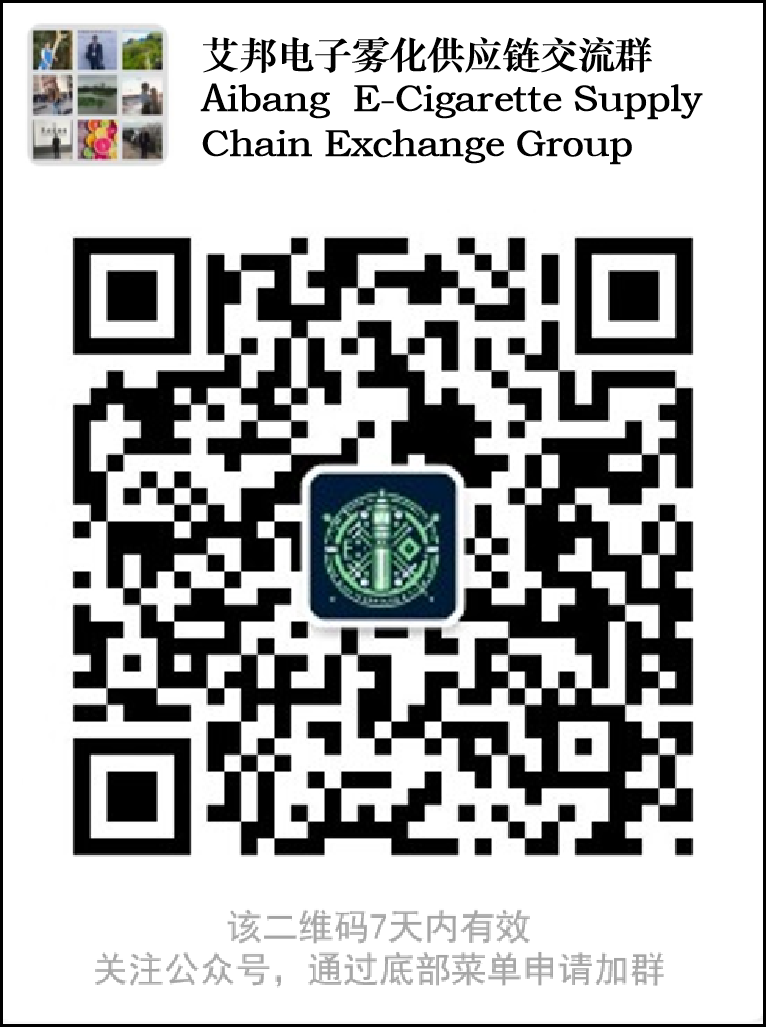本期为“电子烟感官评价指南”专题系列的第一期文章,该系列将全面、深入地展开电子烟感官评价的相关内容,敬请关注。
电子烟感官评价对电子烟及相关制品的产品开发和质量控制起决定性作用。在当前市场环境下,电子烟的感官评价水平对企业来说尤为重要,建立科学的电子烟感官评价体系,是极有价值、且值得进行长期规划的。
Topic 1 评吸方法
评吸方法也许是最容易被电子烟从业人员忽略的关键细节,然而,感官评吸小组成员采用不同的抽吸方式将对感官评价结果产生影响,进而导致感官评价结果失真。
在我国烟草行业标准《烟草及烟草制品—感官评价方法》(YC/T 138—1998)中,规定了两种进行烟草及相关制品感官评价的评吸方法:
(1)局部循环评吸法(local circulation smoking manner)
该方法也称“小循环”评吸法,指评吸员在用感官评价烟草及烟草制品时,只采用部分评吸感觉器官进行评价。如烟气进入口腔稍事停顿后便从鼻腔缓缓排出。该方法利用口腔和鼻腔,使烟气做了一个小的局部循环,使评吸人员对香气、杂气及烟气强度等项目进行评价。这种方法多用于对香精香料的鉴定、调香鉴定,或烟气中某一其他单项进行比较。
这种方法的局限性在于:例如,虽然可以感受出烟气的刺激性,但仅限于对鼻腔的刺激,而不能感觉到对喉部的刺激作用;对苦涩味的感知也很有限;此外,对凉感和余味的感受也不全面。
(2)整体循环评吸法(overall circulation smoking manner)
该方法也称“大循环”评吸法,指评吸员在用感官评价烟草及烟草制品时,采用全部评吸感觉器官进行评价。如当烟气被吸入口腔,通过喉部吞咽后再从鼻腔缓缓排出。该方法通过数次吸、咽、呼反复过程,对烟气质量做出全面判断。采用这种方法进行评吸,所得结论是综合性的,能真实地反映出样品的香气、谐调性、杂气、击喉感、余味等多维度的抽吸体验。
这种方法与大多数吸烟者的习惯相近,对烟草及其制品进行感官评价时更具代表性,在另一烟草行业标准《烟草在制品—感官评价方法》(YC/T 415—2011)中,被指定为唯一可用的评吸方法。
(3)鼻吸法
该方法也被称为“回龙”,只采用部分评吸感觉器官进行评价。指烟气吸入口腔后,稍作停顿,然后微张双唇,使烟气自然逸出,在烟气自然上升的同时,用鼻腔将烟气全部吸入,最后再从口腔或鼻腔呼出。
这种方法不进行喉部吞咽,使用者也较少,行业内多用于调香师对香精香料及烟气进行优劣判定等。此外,国内外暂无将此方法列为标准评吸方法的标准或文献。
总而言之,针对电子烟的感官评价,笔者认为可以借鉴传统烟草及其制品的评吸方法,但在同一组感官评价中须采用相同的评吸方法。
若要对烟气(或气溶胶)进行整体评价以及风味轮廓的描述,整体循环评吸法无疑是最优选;若要对烟气(或气溶胶)中的特定属性进行评吸或对香精香料进行鉴定,则建议选择局部循环评吸法。
此外,在电子烟感官评价的过程中,为使每位感官评价小组成员抽吸到的烟气量(或气溶胶量)保持一致(或大致一致),建议整个抽吸过程持续2秒,力度为自然抽吸(无明显发力动作,接近自然用嘴呼吸的力度)。
Topic 1: Puffing Evaluation Method
The puffing evaluation method might be one of the key details most easily overlooked by professionals in the electronic cigarette industry. However, the use of different puffing techniques by members of a sensory evaluation panel can influence the results of the sensory assessment, leading to distorted outcomes.
In the Chinese tobacco industry standard "Tobacco and Tobacco Products—Sensory Evaluation Methods" (YC/T 138—1998), two methods of puffing for sensory evaluation of tobacco and related products are specified:
(1) Local Circulation Puffing Method
Also known as the "small circulation" puffing method, this technique involves sensory evaluators using only a part of their sensory organs for assessment. For example, smoke is drawn into the mouth, paused briefly, and then slowly exhaled through the nose. This method uses the mouth and nose to create a small local circulation, allowing evaluators to assess aspects such as aroma, off-flavors, and smoke intensity. It is often used for the identification of flavorings and fragrances, blending assessments, or the comparison of other individual aspects within the smoke.
The limitations of this method include, for instance, its ability to detect the irritancy of the smoke is limited to the nasal passages and does not encompass the throat; the perception of bitterness is also limited; furthermore, the sensation of coolness and aftertaste are not fully experienced.
(2) Overall Circulation Puffing Method
Also known as the "large circulation" puffing method, this technique involves sensory evaluators using all their sensory organs for assessment. Smoke is drawn into the mouth, swallowed through the throat, and then slowly exhaled through the nose. Through several cycles of inhaling, swallowing, and exhaling, this method allows for a comprehensive judgment of the smoke quality. The conclusions drawn from this method are integrated and reflect a multi-dimensional smoking experience, including aroma, harmony, off-flavors, throat hit, and aftertaste.
This method is closer to the habits of most smokers and is more representative when evaluating tobacco and its products. In another tobacco industry standard, "Tobacco Semi-finished Products—Sensory Evaluation Methods" (YC/T 415—2011), it is designated as the only puffing method to be used.
(3) Nasal Snuffing Method
Also known as "return dragon," this method involves sensory evaluators using only a part of their sensory organs for assessment. Smoke is drawn into the mouth, paused briefly, then the lips are slightly parted to allow the smoke to naturally escape. As the smoke rises, it is completely inhaled through the nose and then exhaled through the mouth or nose.
This method does not involve swallowing through the throat and is less commonly used. It is often employed by flavorists for the assessment of flavorings and fragrances, as well as for the evaluation of smoke quality. Additionally, there are no domestic or international standards or literature that list this method as a standard puffing method.
In summary, for the sensory evaluation of electronic cigarettes, it is believed that the traditional puffing methods used for tobacco and its products can be referenced, but the same puffing method must be used within the same sensory evaluation group.
If the goal is to conduct a comprehensive evaluation of the smoke (or aerosol) and describe the flavor profile, the overall circulation puffing method is undoubtedly the best choice; if the aim is to evaluate specific attributes of the smoke (or aerosol) or to identify flavorings and fragrances, the local circulation puffing method is recommended.
Furthermore, during the sensory evaluation of electronic cigarettes, to ensure that each member of the sensory evaluation panel draws a consistent amount (or approximately consistent) of smoke (or aerosol), it is suggested that the entire puffing process lasts for 2 seconds, with the intensity being that of natural puffing (without obvious exertion, close to the intensity of natural breathing through the mouth).
原文始发于微信公众号(雾化探秘):电子烟感官评价指南(一):评吸方法
电子雾化与HNB产品都是新型电子产品,结构虽小,却融合应用多种材料、表面处理、芯片电子等技术工艺,而且雾化技术一直在不断更迭,供应链在逐步完善,为了促进供应链企业间有一个良好的对接交流,艾邦搭建产业微信群交流平台,欢迎加入;Vape e-cigarettes (VAPE) and Heat-Not-Burn e-cigarettes (HNB) are both emerging electronic products. Despite their compact size, they integrate various materials, surface treatment technologies, chip electronics, and other advanced technical processes. Moreover, atomization technology is constantly evolving and the supply chain is being progressively perfected. To facilitate good communication and networking among supply chain enterprises, Aibang has established an industry WeChat group communication platform and warmly welcomes interested enterprises to join.

